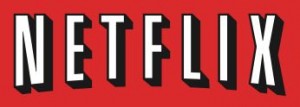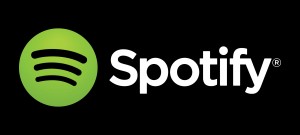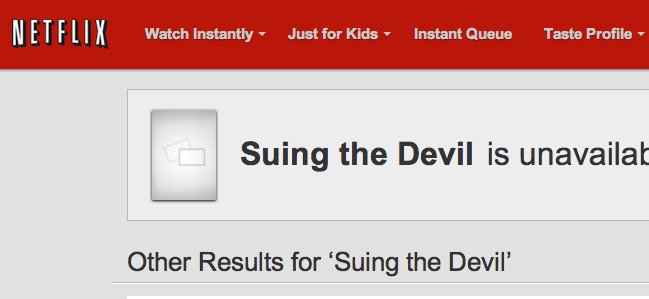Netflix, Spotify and the Economics of Chasing Piracy
 Right now, if you live in the United States, for less than $20 per month you can have a premium Spotify account ($9.99) and a Netflix account ($8.99) and have unlimited access to both millions of songs and thousands upon thousands of hours of video content.
Right now, if you live in the United States, for less than $20 per month you can have a premium Spotify account ($9.99) and a Netflix account ($8.99) and have unlimited access to both millions of songs and thousands upon thousands of hours of video content.
In short, for just $20 per month, you can rest assured that you will never be hurting for something to watch on your television and music to listen to. Between Spotify’s near-complete music library and Netflix’s video library, you will be entertained, 24/7 if you so choose. Add in Hulu Plus ($7.99/month) and Amazon Prime ($99/year) and your options improve even further.
While it may not be the dream of seeing or listening to absolutely everything you want immediately for free (though Spotify does offer a free account), it is the golden age of legitimate access to content. Not only do all of the old options still exist, including newspapers, radio, movie theaters and CDs, but a bevy of options are now available online that offer access that was unthinkable just 20 years ago.
Yet, despite the dropping costs and increased access, piracy is still rampant. In fact, a recent study found that piracy in the United States was growing, not decreasing, as more people turn to p2p networks, streaming sites and file lockers to get free access to copyrighted content.
Why is it that, even as legitimate content gets cheaper and more convenient, illegal sources continue to thrive and grow? It’s because piracy isn’t a simple problem and anyone who says otherwise is either lying or naive.
A Complex Issue
 The problem with piracy is that it isn’t a straightforward issue. Though most Internet users don’t download content illegally, most of those that do don’t do so exclusively.
The problem with piracy is that it isn’t a straightforward issue. Though most Internet users don’t download content illegally, most of those that do don’t do so exclusively.
In fact, of those who do pirate content, only a small handful actually do so as their sole source of content. Most are hybrid pirates that fill their time with a mix of legitimate and infringing material. That mix can vary, from almost exclusively legitimate to almost exclusively infringing, but almost all both legally and illegally acquire content.
Then there’s the issue that there are a slew of reasons for why people pirate content. Apathy, inability too pay, convenience and outright spite are all reasons that users pirate content.
This means that there is no one-size fits all approach to piracy. A pirate who simply can’t afford their collection isn’t going to be swayed by any reduction of cost that doesn’t reach free. Likewise, someone who pirates out of spite isn’t going to care how convenient a legitimate solution is.
And then there’s the issue of the different business models. Books, songs, movies, TV shows and video games all have different requirements to create them. But the drill down goes even farther as a YouTube video is different than a small indie film, which is different from a large blockbuster.
Just as no two pirates pirate for the same reasons, no two pieces of content have the same requirements to be a success. Even if you did create a one-size-fits-all approach to dealing with pirates, it likely wouldn’t work for all content creators.
In short, there are no easy answers and no quick fixes, this includes business model, legislative, enforcement or otherwise.
Moving the Needle
Rather than trying to to find silver bullets or quick answers, each content creator has to look at their situation and decide, how I do they convert as many would-be pirates into customers and at what point does it stop being worthwhile to do so?
If this sounds like simple economics it’s because it is. At some point, converting a pirate into a customer doesn’t make financial sense as the cost of chasing them is greater than the revenue they could bring in.
However, to achieve this goal, content creators need to look at all options and those include:
- Increased Access: Making a work available on more services increases convenience and sways those who pirate out of convenience to become customers.
- Reducing Cost: Reducing costs targets those who pirate due to financial reasons, likely bringing on more customers while earning less from each one.
- Copyright Enforcement: Copyright enforcement makes piracy less convenient and more risky. This can make legitimate options both more convenient and more appealing.
- Addons and Tangible Goods: Providing goods and features solely to legitimate copies (such as online multiplayer, club memberships, shirts, etc.) increases the value of legitimate works and makes them more appealing to price conscious pirates and those who are rabid collectors.
But even with all of these, and other, tools, there comes a point where it’s no longer worthwhile to chase pirates. That point is different for every creative work. HBO, for example, had over 1.5 million people download the season premier of Game of Thrones. However, through premium cable subscriptions and DVD sales, they likely earn far more than if they simply put the work on Netflix or any other video streaming service.
Compare this to Netflix, whose new season of “House of Cards” was downloaded some 90,000 times and their latest season of “Orange is the New Black” was downloaded some 55,000 times. While this is still significant considering that 90,000 illegal downloaders would be worth approximately $9,720,000 per year if they all became legitimate customers, they are only a fraction of the downloaders that Game of Thrones saw.
In the end, both Netflix and HBO will likely find their efforts will be very lucrative, even though their piracy numbers are very different, because their approaches make it so that groups of differing sizes are not worth reaching out to.
Bottom Line
We are in the golden age of legitimate content and that is a great thing for consumers. Costs for obtaining legitimate entertainment has never been lower, access has never been greater and, in the U.S. and most major markets at least, everyone is reaping the benefits.
While there is a lot of progress that can be made on the front of reducing costs and improving access, it’s clear that things are heading in that direction. But even as that trend has become clear, it’s become equally clear that piracy is not going to just go away as legitimate access improves.
Copyright holders are, individually, going to have to make difficult decisions about how to respond to this while trade organizations and groups are going to have to work to try and keep the playing field as level as possible.
Piracy is never going to be eradicated, it was a reality before the Internet and it will be one after as well. However, with a combination of strengthened enforcement, improved customer experience and lower costs, piracy can, most likely, be relegated to the kind of manageable expense that it was, not a killer of careers.
That, in turn, is the goal according to most copyright owners. It’s not about stopping all piracy, but rather, making it largely irrelevant.
Want to Reuse or Republish this Content?
If you want to feature this article in your site, classroom or elsewhere, just let us know! We usually grant permission within 24 hours.
